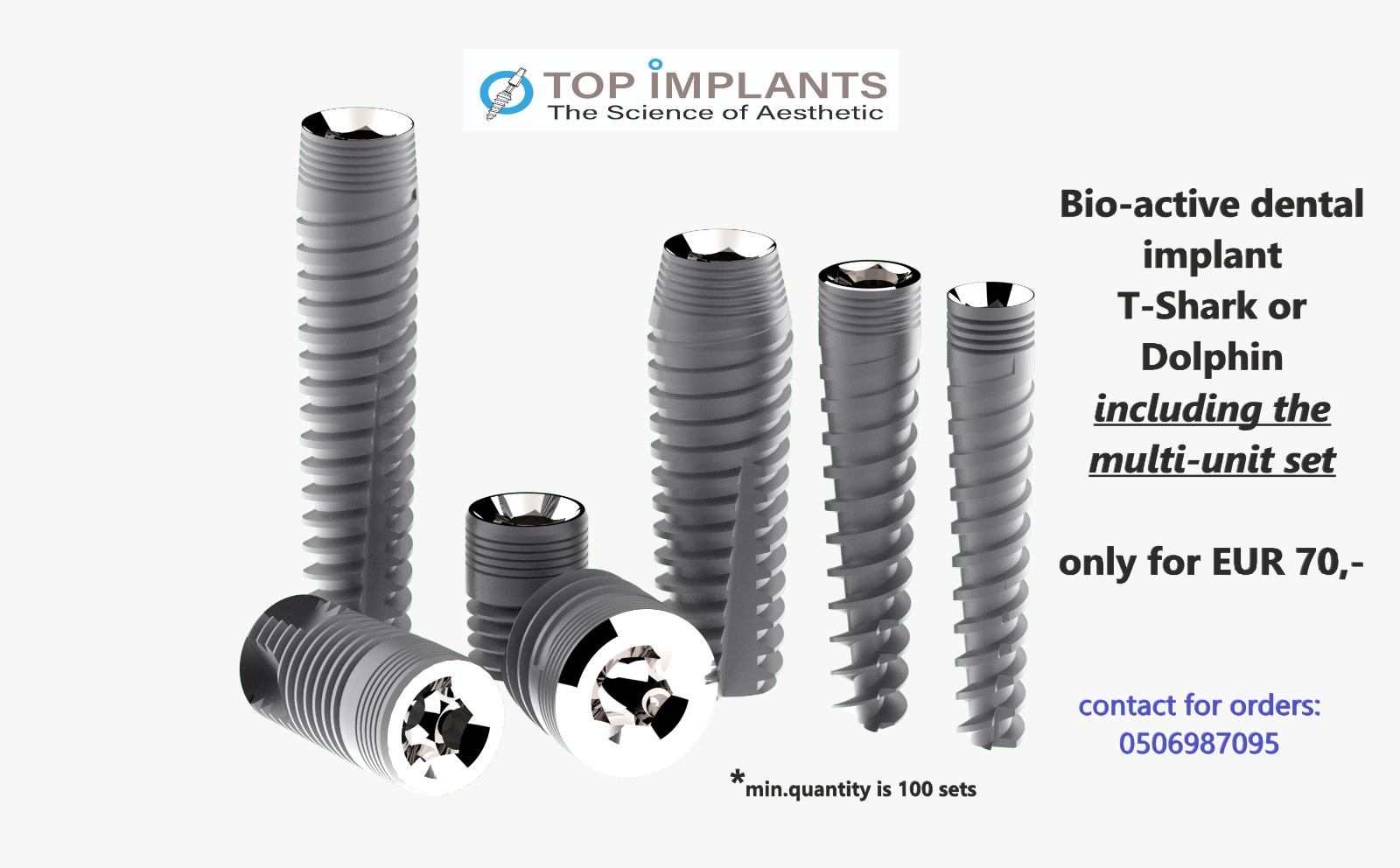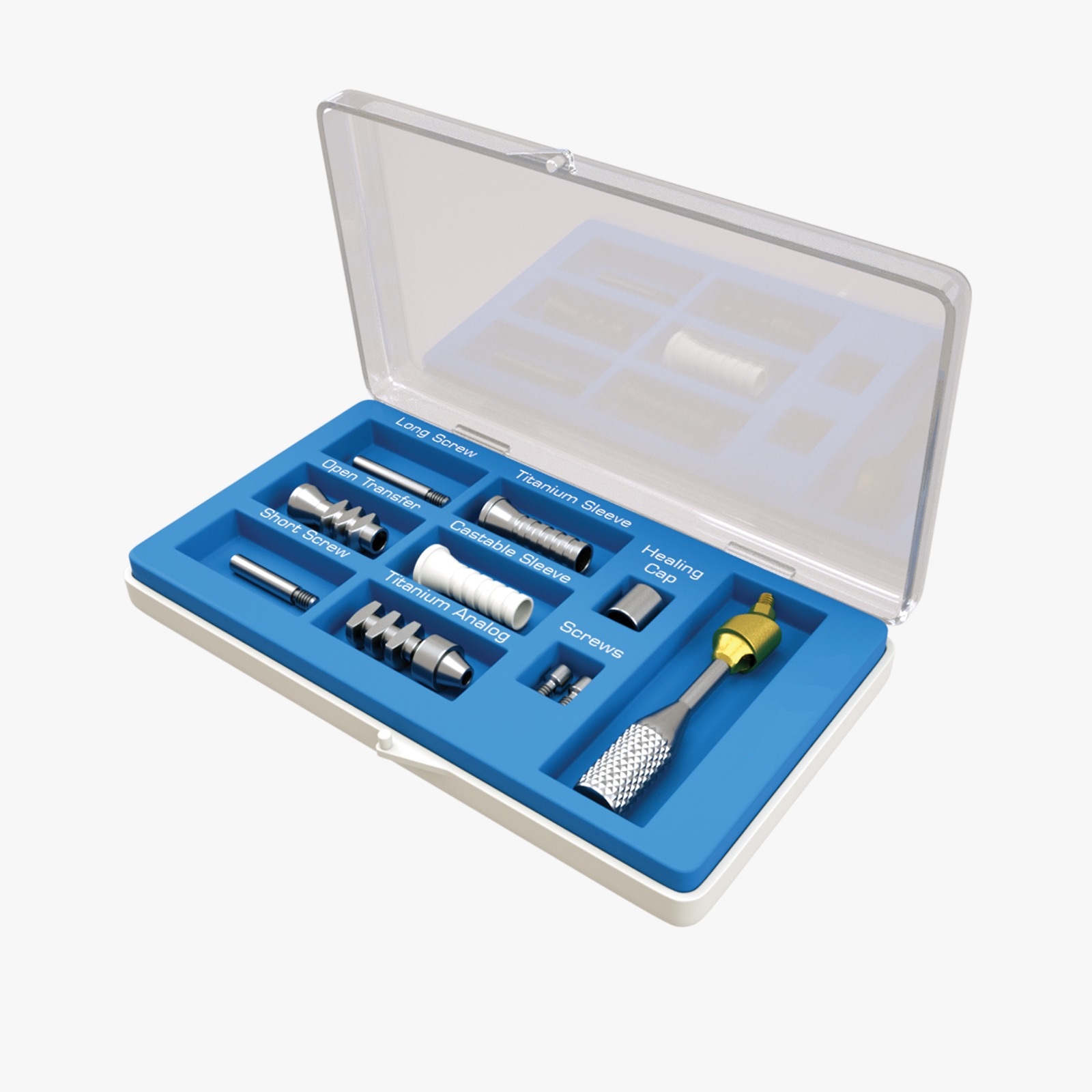- Your cart is empty
- Continue Shopping
Multi-Unit Abutment
-
clickin360
- Posted on
- 0 comments
Multi-Unit Abutment
Multi Unit Abutment | TOC
Multi-unit abutments are a success in prosthetics of any complexity! The Multi-unit abutments were developed by Nobel Biocare in 2000 and were the first abutments developed with this system and of this type. From that moment on, it became the standard for many manufacturers.
Multi-Unit Abutment Advantages
Each Multi-unit Abutment comes with a pre-installed holder, which makes it easier to fix the restorations, and also serves as a guide for the angle of inclination of the abutment. The Multi-unit has: Short taper ideal for limited distances. Wide base for easy installation of the structure. Straight and Angled Multi-unit Abutments fit all gingiva types.
The Multi-unit Abutment is designed for both full and partial restorations, and in particular for use in conjunction with the scientifically proven and clinically proven All-on-4® treatment concept.
Multi-Unit Abutment Precision and Aesthetics
Multi-unit Abutments provide an extremely accurate fit of fixed and non-removable restorations, a wide range of high-precision CAD / CAM restorations, tested for accuracy and compatibility with the Multi-unit Abutment.
Multi-unit Plus Abutments
These tapered abutments are designed to speed up and simplify temporary restorations. The temporary coping snaps easily onto the Multi-unit Plus Abutment and does not require the use of screws to secure the temporary denture during try-in and preparation.
What are All-on-4 Dental Implants?
This technique is used in implantology to rehabilitate full arches in patients who do not have any teeth or who have to have a full mouth. It is a technique promoted by the NobelBiocare trade house a few years ago, which consisted of placing 4 or 5 dental implants by placing the most posterior inclined or angled.
This angulation of the most posterior implants is carried out to avoid anatomical areas such as:
In the upper part: In order to avoid the need for bone grafts such as sinus lift.
In the lower part: The lack of available bone height in the area of the lower molars.
Normally the 4 dental implants are placed with the classic technique, but sometimes an additional 5 implants can be placed. All these factors depend on the patient’s bone, both the height, the width, and the existing bone density.
On these dental implants, some pillars or intermediate pieces are placed and on these it is on which the screwed hybrid prosthesis is made.

All-on 6 Dental Implants
What is All-in-6 Implantation?
According to the All-on-6 protocol, titanium posts, or artificial roots of future teeth, are integrated in the same way as with All-on-4. The difference is that one more implant is added to the distal (lateral) parts of the jaw on each side. The protocol provides for the following implantation scheme:
2 implants are implanted into the area of the anterior incisors, mainly vertically to the roots of natural teeth; In the lateral (distal) parts of the jaw, 2 implants are implanted mainly vertically, and the latter on each side of the jaw – vertically or obliquely to the axis of the tooth.
The angle of inclination is chosen by the doctor depending on the density and parameters of the jawbone in the lateral parts of the jaw. For lateral implants, special multi-unit abutments are used, which allow the crown to be placed strictly vertically, regardless of the angle of inclination of the post.
With the All-on-six implantation, the chewing pressure is evenly distributed on the integrated supports of the artificial teeth. This prevents the system from overloading and minimizes the risk of implant rejection. The technology makes it possible to load the implanted posts with prosthetic structures after 3 days. Due to this feature, All-on-6 and All-on-4 technologies can be classified as one-stage implantation protocols with immediate loading.
When an All-on-6 implantation is needed?
Complete adentia of the jaw, in which some areas of the jawbone have strongly atrophied (lost in their original volume due to natural shrinkage of the bone tissue)
Partial adentia of the jaw, while the remaining teeth are badly loosened, deteriorated and are not suitable as supports for a classic bridge.
The patient is diagnosed with inflammation of the periodontal tissues (periodontitis or periodontal disease).
The patient refuses osteoplasty, or there are certain contraindications for sinus lifting.
The doctor believes that fewer supports do not provide sufficient stability for the prosthetic structure.


